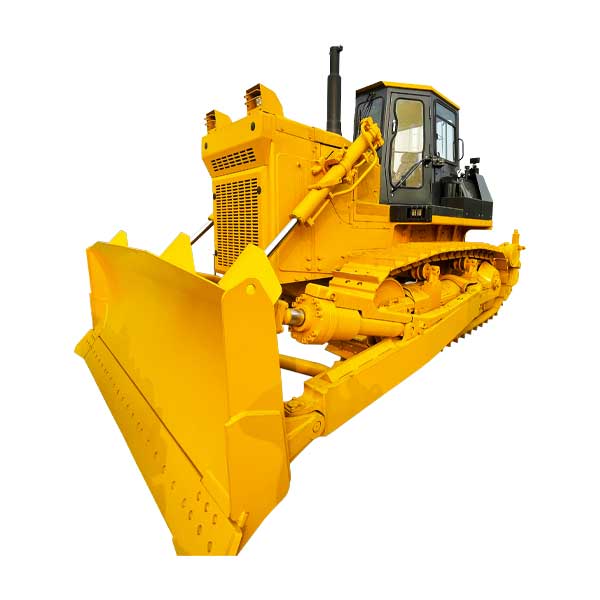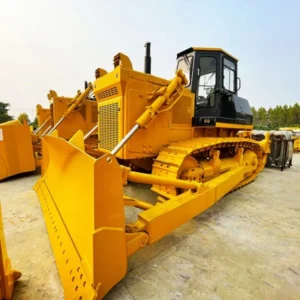Introduction

In the realm of construction and earthmoving, dozers stand as indispensable tools, tasked with clearing, grading, and moving vast amounts of material. However, selecting the right dozer size for a specific project is crucial for ensuring efficiency, safety, and cost-effectiveness. This comprehensive guide delves into the intricacies of dozer sizing, exploring factors to consider, common dozer sizes, and applications. We will also provide a table summarizing the key points discussed, empowering you to make informed decisions about dozer selection for your construction projects.
Factors to Consider When Choosing a Dozer Size
The selection of the appropriate dozer size hinges on several critical factors:
- Project Scope and Requirements: The size and complexity of the project dictate the dozer size needed. Larger projects demand larger dozers with greater power and capacity.
- Site Conditions: Terrain, soil type, and obstacles influence dozer selection. Smaller dozers may be more suitable for rough or uneven terrain, while larger dozers can handle challenging conditions.
- Budget Considerations: Dozer size directly impacts the purchase or rental cost. Evaluate the project budget and choose the most cost-effective dozer size that meets the project requirements.
- Operator Experience and Skills: Consider the operator’s experience and skill level when selecting a dozer size. Larger dozers require more experienced operators to ensure safe and efficient operation.
- Environmental Regulations: Some regions may have regulations regarding dozer size and emissions. Ensure the selected dozer complies with applicable environmental standards.
Common Dozer Sizes and Their Applications

Dozers are categorized into different size classes based on their blade width and horsepower:
- Small Dozers (Blade Width: 6-8 Feet, Horsepower: 60-100): Ideal for small-scale projects, landscaping, and finishing work.
- Medium Dozers (Blade Width: 8-10 Feet, Horsepower: 100-150): Suitable for a wider range of projects, including road construction, site preparation, and material handling.
- Large Dozers (Blade Width: 10-15 Feet, Horsepower: 150-300): Designed for large-scale earthmoving projects, such as mining, dam construction, and land clearing.
- Extra-Large Dozers (Blade Width: Over 15 Feet, Horsepower: Over 300): Employed in the most demanding projects, including heavy-duty earthmoving, pipeline construction, and large-scale site development.
Table: Summary of Common Dozer Sizes, Blade Widths, Horsepower Ranges, and Applications
| Dozer Size | Blade Width | Horsepower Range | Applications |
|---|---|---|---|
| Small Dozer | 6-8 Feet | 60-100 | Landscaping, finishing work, small-scale construction |
| Medium Dozer | 8-10 Feet | 100-150 | Road construction, site preparation, material handling, general earthmoving |
| Large Dozer | 10-15 Feet | 150-300 | Mining, dam construction, land clearing, large-scale earthmoving |
| Extra-Large Dozer | Over 15 Feet | Over 300 | Heavy-duty earthmoving, pipeline construction, large-scale site development |
Conclusion: Dozer Sizes
Choosing the appropriate dozer size is paramount for successful construction projects. By carefully considering project requirements, site conditions, budget constraints, operator experience, and environmental regulations, you can select the dozer that optimizes efficiency, safety, and cost-effectiveness. Remember, a dozer that is too small for the job will struggle to perform, while a dozer that is too large may be unnecessarily expensive and difficult to maneuver.
FAQs
Q: How do I determine the right dozer size for my construction project?
A: Determining the appropriate dozer size involves assessing several factors, including the type of terrain, the scope and duration of the project, the specific tasks to be performed, and the available budget. Consulting with experienced contractors or equipment specialists can also provide valuable insights tailored to your project’s needs.
Q: What are the potential consequences of using an improperly sized dozer?
A: Using a dozer that is too small for the job may result in decreased productivity, increased wear and tear on the equipment, and longer project timelines. Conversely, using a dozer that is too large can lead to unnecessary fuel consumption, difficulty maneuvering in tight spaces, and potentially higher upfront costs.
Q: Can I use a single dozer size for all types of construction projects?
A: While some dozer sizes may be more versatile than others, it’s essential to match the equipment to the specific requirements of each project. Factors such as the size of the area to be cleared, the depth of cuts needed, and the type of material being moved will influence the ideal dozer size for optimal efficiency and performance.
Q: How does proper dozer sizing impact project timelines and overall efficiency?
A: Selecting the right dozer size can significantly impact project timelines and efficiency. A properly sized dozer can complete tasks more efficiently, leading to shorter project durations and reduced labor costs. Additionally, the right size dozer is better equipped to handle the demands of the job, minimizing downtime and maximizing productivity.
Q: Are there any considerations for environmental impact when choosing dozer sizes?
A: Yes, environmental considerations should be factored into dozer size selection. Using appropriately sized equipment can help minimize environmental disturbances by reducing fuel consumption, emissions, and soil compaction. Additionally, selecting the right size can ensure that projects are completed with minimal disruption to surrounding habitats and ecosystems.






-150x150.webp)
